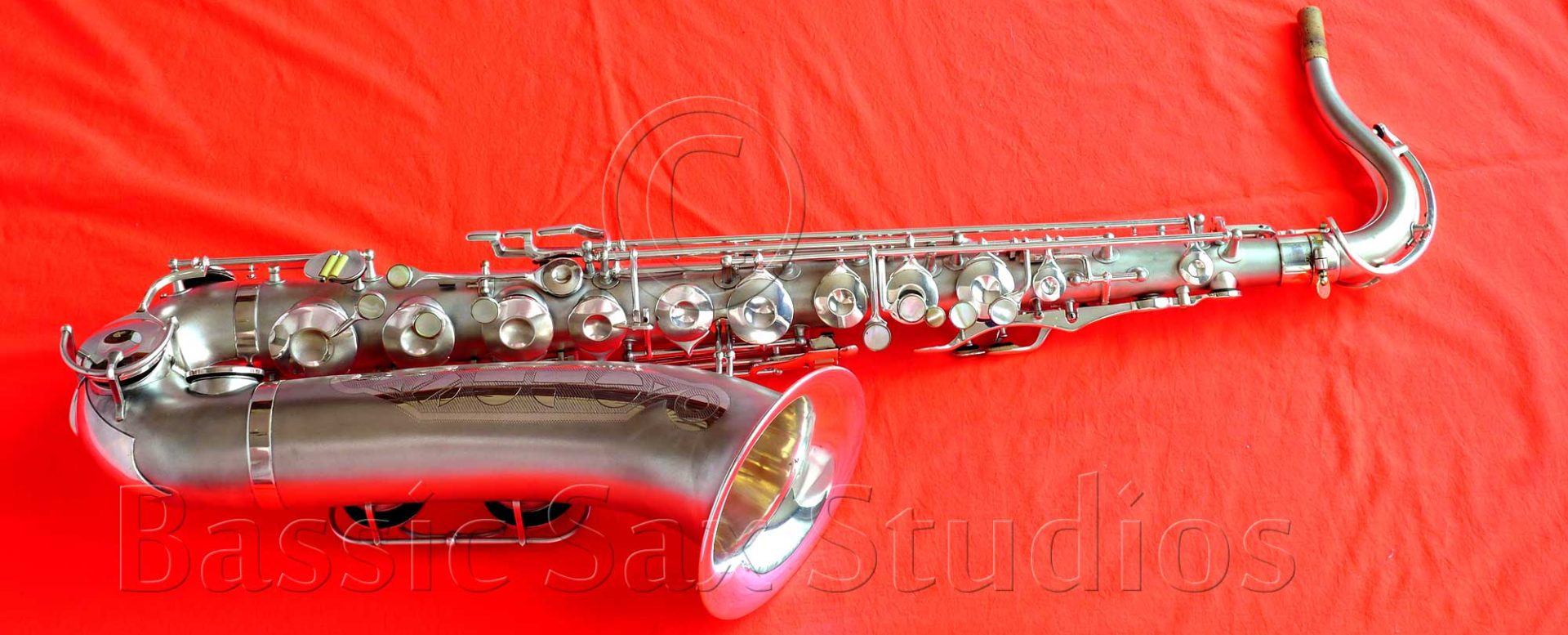Julius Keilwerth Bass Saxophone SX 90
The Keilwerth SX 90 is one of only a handful of professional model bass saxophones still made in Europe.
In 2006 an owner of a Keilwerth bass saxophone sent an email to the company enquiring about his horn, and the history Keilwerth bass saxophones in general. At the time an employee from Keilwerth replied that the company started making bass saxophones in 1970. This is in fact incorrect. In a recent email exchange I had with Uwe Ladwig—German saxophonist, repair tech, producer, and former writer for the German music magazine Sonic Sax & Brass—he informed me that Keilwerth’s bass history in fact goes much further back this.
According to Julius Keilwerth’s grandson Gerhard, Keilwerth was producing bass saxophones as far back as the 1920s. As a matter of fact, Uwe has a Keilwerth catalogue from 1935 that lists the bass saxophone in it.
In 2006 Keilwerth reported that they were making only 2 or 3 bass saxophones annually.¹ Uwe confirmed this number, and said that approximately 100-150 Keilwerth bass saxophones have been built to date. These low production numbers may in part be due to the horns’ design.
Keilwerth’s bass saxophones are based on the vintage American style. They are not what are commonly referred to as short, or French wrap horns like those that Selmer produces.
Bear, the owner of Cybersax, gives us a really good definition of what the term wrap means, and how the French and American wraps differ in sound:
By ‘wrap’ we refer to the spots at which the instrument’s designers choose to place the bends in body tubing in order to produce an instrument with keywork that is both mechanically efficient AND ergonomically ‘friendly’ to the player. Compared to the American bass saxophones [the] Selmer…design produces a little ‘tamer’ sound, probably more suited to classical (think a bowed string bass) or ‘legit’ applications than to roaring out lines we associate with the modern electric bass.
Source: Cybersax
Source: eBay.com
Keilwerth bass saxes are keyed to high Eb, and have what is often called a sink trap neck.
Source: eBay.com
While playing high E and F on a bass is not difficult using altissimo fingerings, many players do prefer to have a sax keyed to high F, or even high F#. For those players, the Keilwerth is automatically out of the running.
According to the company’s website in 2009, the SX 90’s specifications are as follows:
- Range from low Bb to high Eb
- Thumb rest adjustable in height and angle
- Mother of pearl key inlays without metal rim
- Stainless steel screws
- Hydraulically formed neck
- Leather pads with metal resonators, waterproof
- Finish available: JK5300-8 gold lacquered
Also according to the Keilwerth website, the following are the features and the benefits of the SX 90 bass saxophone:
Features |
Benefits |
Bigger bow section |
makes low register easy to play at all dynamic levels |
Mother of pearl key inlays without metal rim |
optimum playing comfort |
B-Bb-C#-G# key mechanism for the left hand little finger |
easy to operate because of pivoted Bb key |
Adjustable thumb rest (height and angle) |
optimum hand positioning |
High quality leather pads with metal resonators, waterproof |
long lasting, improved sound projection and clarity |
Hydraulically formed neck |
excellent intonation and response |
This SX 90 was sold in Spring 2010 by a member of a band that specialized in Philadelphia String Band music. To protect the horn from scratches that it might get from buckles and chairs, the owner had applied the protective vinyl seen on these photos. This sax is circa 2000.
Source: eBay.com
__________________________________________________
¹ This was reported in the email sent to the Keilwerth owner who inquired about the history of Keilwerth bass saxophones in general, and his bass in particular.
















You must be logged in to post a comment.